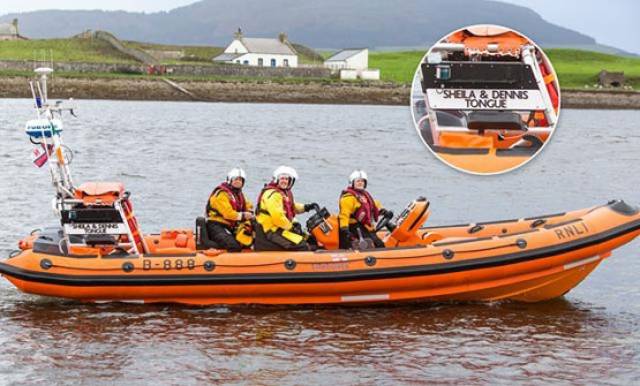#RNLI - The new Sligo Bay RNLI Atlantic 85 lifeboat is to be officially named Sheila & Dennis Tongue during a ceremony at the lifeboat station at Rosses Point in Sligo next Saturday 16 April 2016 at 3pm.
The lifeboat will be passed into the care of the RNLI and officially named during a short ceremony and service of dedication by brothers Raymond and Philip Tongue, who are nephews of the couple and will travel to Ireland with their families for the special event.
Mr and Mrs Dennis Tongue left a generous legacy to the RNLI in recognition of the vital life-saving work of the charity and as a thank-you for the happy days they spent living on the coast at Exmouth.
The couple were born in Birmingham in the 1920s and on Dennis’s retirement they moved to Devon where they lived until their eighties, overlooking the coast.
The couple did not have any children and it was during their retirement that they came to know and admire the work of the RNLI and recognise its place in the life of the communities it served.
The new lifeboat that arrived in Sligo last November, as previously reported on Afloat.ie, replaces Elsinore, which during its 13 years on service launched 189 times and rescued 155 people.
Sligo Bay RNLI lifeboat operations manager Willie Murphy, who will be accepting the lifeboat into the care of the station from the Tongue family on behalf of the volunteers, said: "I would like to express our sincere gratitude to the late Mr and Mrs Tongue for their generous and life-saving gift.
"This lifeboat is the vessel that will carry our volunteer lifeboat crew out to sea to save lives and rescue people in difficulty and it will provide our volunteer lifeboat crew the opportunity to train and develop their skills to carry out that work.
"We look forward to welcoming the family of Sheila and Dennis to this beautiful part of the world and we hope this is the beginning of a wonderful friendship with them."
The Atlantic 85 lifeboat was built at a cost of €276,000 and was introduced into the RNLI fleet in 2005. It operates mostly in shallow waters close to the shore or cliffs, among rocks and caves. It is operational in conditions up to a Force 7 and the design accommodates four crew and multiple casualties.
The lifeboat has a top speed of 35 knots and has a manually operated righting mechanism with inversion proofed engines, meaning it can be righted after capsize and kept operational.
The boat is also capable of being beached in an emergency without sustaining damage to the engines. It carries a full suite of communication and electronic navigation aids.
Sligo Bay RNLI crew and management will put their new lifeboat on display to the general public on their station open day on Sunday 19 June.
































































